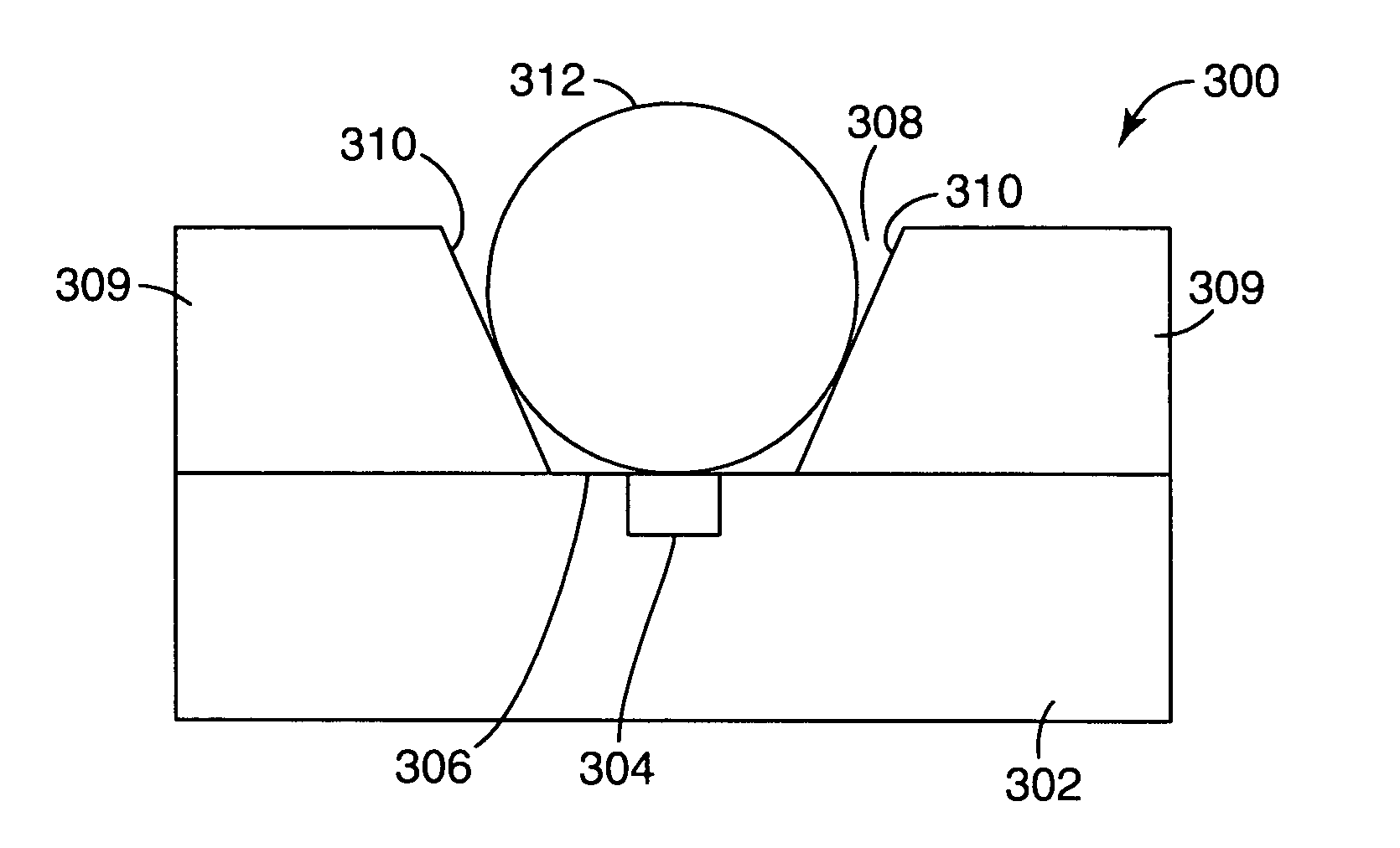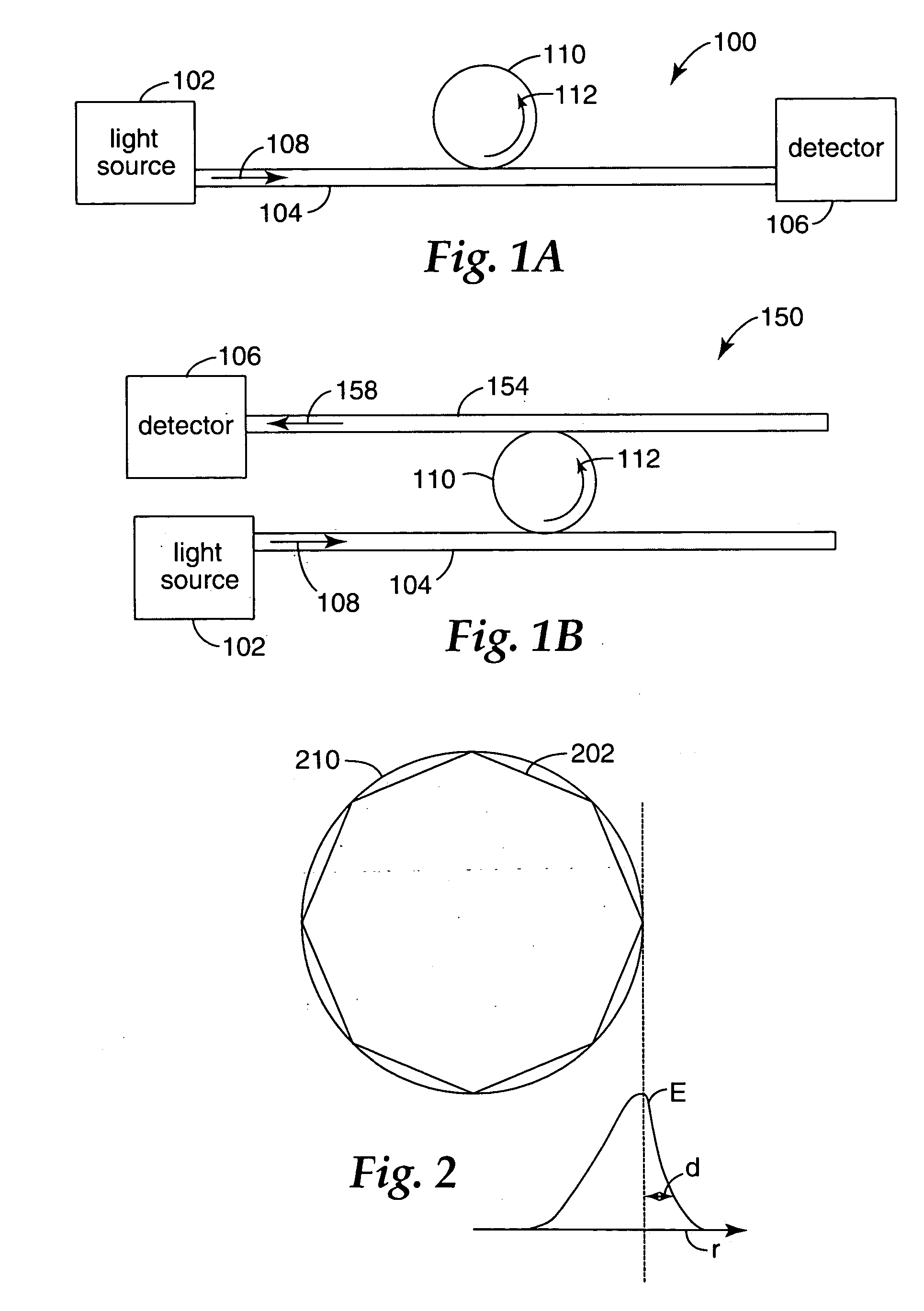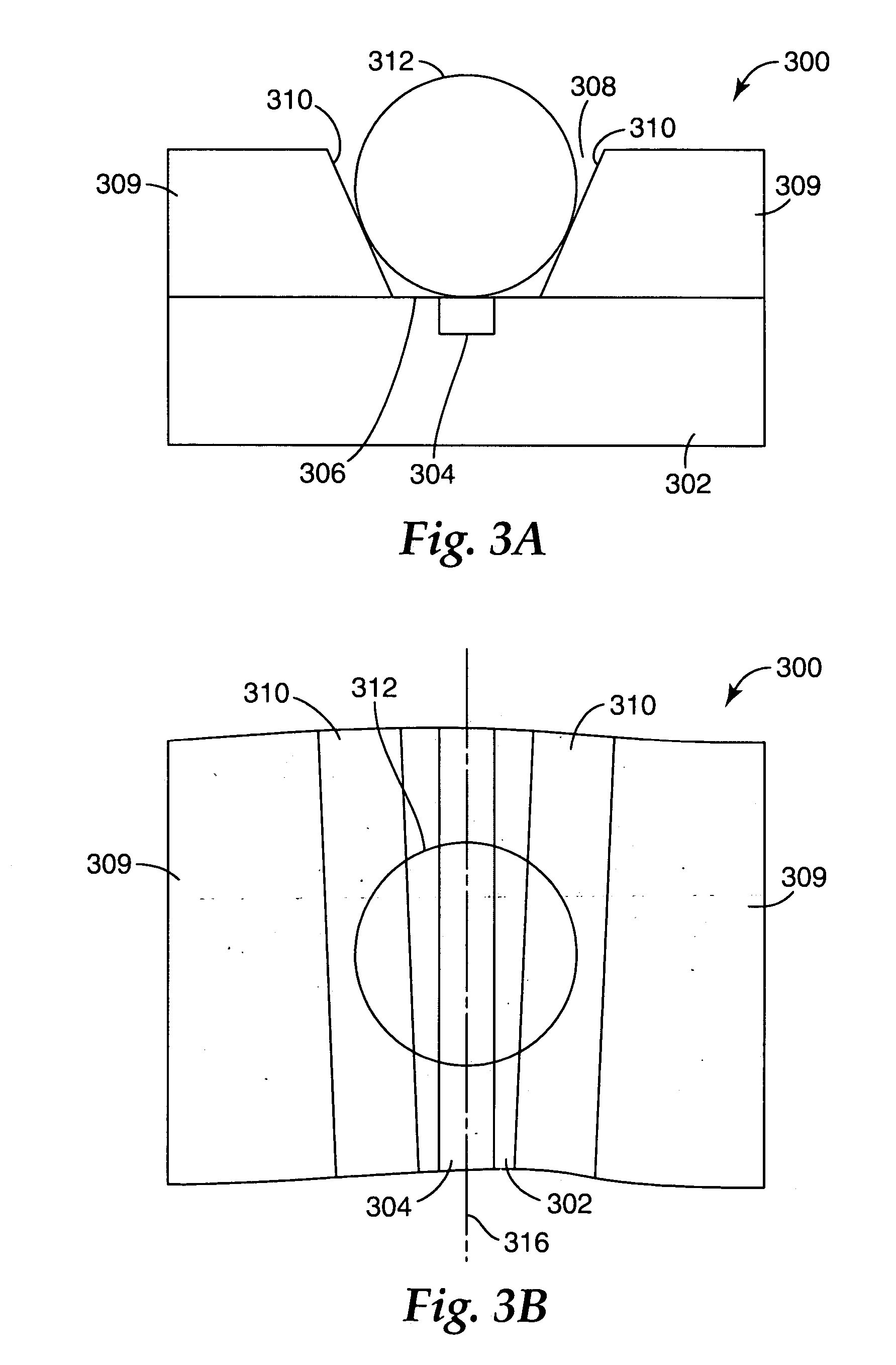Hybrid sphere-waveguide resonators
a waveguide and sphere technology, applied in the field of optical devices, can solve the problems of difficult to achieve the fiber-microsphere combination described above, difficult to achieve the free sphere and thinned fiber, and relatively long (a few cm), so as to increase the stability of the position of the microcavity, facilitate the launch, and reduce the effect of the cavity q
- Summary
- Abstract
- Description
- Claims
- Application Information
AI Technical Summary
Benefits of technology
Problems solved by technology
Method used
Image
Examples
Embodiment Construction
The present invention is applicable to passive and active optical devices, such as sensors, filters, amplifiers, and / or micro-lasers, that use microresonators, such as microspheres and micro-planar ring cavities. The invention is believed to be particularly useful for fabricating such devices, in that the relative positions of the microresonator and the waveguide are controlled, the microresonator Q-factor can be high, and there is ease in launching and receiving the optical beam.
A microsphere-waveguide system 100 that uses a microresonator is schematically illustrated in FIG. 1A. A light source 102 directs light along a waveguide 104 to a detector unit 106. The microresonator 110 is optically coupled to the waveguide 104. Light 108 from the light source 102 is launched into the waveguide 104 and propagates towards the detector unit 106. The microresonator 110 evanescently couples some of the light 108 out of the waveguide 104, the out-coupled light 112 propagating within the mic...
PUM
| Property | Measurement | Unit |
|---|---|---|
| thickness | aaaaa | aaaaa |
| diameter | aaaaa | aaaaa |
| optical coupling | aaaaa | aaaaa |
Abstract
Description
Claims
Application Information
 Login to View More
Login to View More - R&D
- Intellectual Property
- Life Sciences
- Materials
- Tech Scout
- Unparalleled Data Quality
- Higher Quality Content
- 60% Fewer Hallucinations
Browse by: Latest US Patents, China's latest patents, Technical Efficacy Thesaurus, Application Domain, Technology Topic, Popular Technical Reports.
© 2025 PatSnap. All rights reserved.Legal|Privacy policy|Modern Slavery Act Transparency Statement|Sitemap|About US| Contact US: help@patsnap.com



